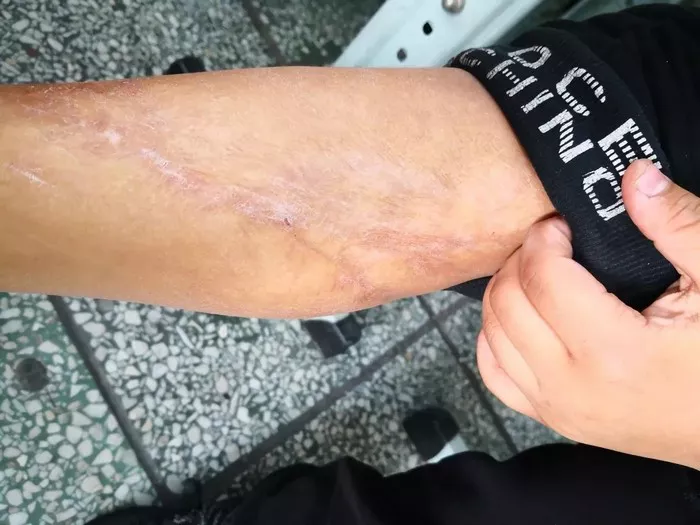Burn injuries can have devastating physical and emotional effects, leaving behind scars that serve as constant reminders of traumatic experiences. While modern medicine has made significant advancements in burn treatment, many individuals continue to grapple with the long-term effects of burn scars. In recent years, plastic surgery has emerged as a promising option for addressing burn scars and restoring both form and function. In this comprehensive guide, we’ll explore the potential of plastic surgery in removing burn scars, including its benefits, limitations, and alternatives, to empower individuals on their journey towards healing and recovery.
Introduction to Burn Scars and Treatment Options
Burn scars can vary widely in type and severity, depending on factors such as the depth and extent of the burn injury. Common types of burn scars include:
Hypertrophic Scars: Raised, red scars that may be itchy or uncomfortable.
Keloid Scars: Thick, raised scars that extend beyond the boundaries of the original injury.
Contracture Scars: Tight, restrictive scars that can limit movement and function, often forming over joints or large areas of the body.
Beyond the physical implications, burn scars can have profound emotional and psychological effects on individuals. They may impact self-esteem, body image, and quality of life, leading to feelings of self-consciousness, depression, and anxiety.
Treatment options for burn scars range from non-surgical approaches to more invasive surgical interventions. Non-surgical options include the use of silicone sheets, pressure garments, laser therapy, and topical treatments. While these methods can help improve the appearance and texture of scars, they may not always provide satisfactory results, particularly for severe or extensive scarring.
Plastic Surgery for Burn Scar Treatment
Plastic surgery offers a range of techniques for burn scar revision, aimed at improving both aesthetic appearance and functional outcomes. Common plastic surgery procedures used for burn scar treatment include:
Skin Grafting: The transfer of skin from a healthy donor site to cover the burned area.
Tissue Expansion: A technique that stretches nearby healthy tissue to provide coverage for the scarred area.
Scar Excision: Surgical removal of the scar tissue, followed by closure with sutures or skin grafts.
Flap Surgery: Transfer of healthy tissue, along with its blood supply, to reconstruct the burned area.
Plastic surgery for burn scars can offer several benefits, including improved appearance, increased range of motion, and reduced scar tightness or discomfort. By addressing both the aesthetic and functional aspects of scarring, plastic surgeons aim to restore a sense of normalcy and confidence for individuals affected by burn injuries.
Limitations and Realistic Expectations
It’s important to acknowledge that complete removal of burn scars may not always be possible, particularly for severe or deep scars. Factors influencing the success of plastic surgery for burn scar revision include the severity and location of the scar, individual skin characteristics, and overall health.
Additionally, it’s essential for individuals considering plastic surgery for burn scars to have realistic expectations about the outcomes. While plastic surgery can significantly improve the appearance and function of burn scars, it may not completely erase them. Scars are a natural part of the body’s healing process, and some degree of scarring may remain even after surgical intervention.
Recovery and Aftercare
The recovery process after plastic surgery for burn scars can vary depending on the specific procedure performed and individual factors. Patients may experience swelling, bruising, discomfort, and temporary limitations in movement during the initial healing period.
Following post-operative instructions provided by the plastic surgeon is crucial for ensuring optimal healing and outcomes. This may include keeping the surgical site clean and protected, taking prescribed medications as directed, avoiding strenuous activities, and attending follow-up appointments for monitoring and wound care.
Scar management techniques, such as massage, silicone gel sheets, and specialized skincare products, may also be recommended to promote optimal healing and minimize the appearance of scars. In some cases, additional treatments or revisions may be necessary to achieve the desired results.
Alternatives to Plastic Surgery
While plastic surgery offers effective options for burn scar treatment, it’s important to explore non-surgical alternatives as well. Non-surgical treatments such as laser therapy, steroid injections, and dermal fillers can complement surgical interventions and help further improve the appearance of burn scars.
A comprehensive treatment approach may involve a combination of surgical and non-surgical methods tailored to the individual’s unique needs and goals. By addressing both the aesthetic and functional aspects of scarring, individuals can achieve more comprehensive and satisfactory outcomes.
Emotional and Psychological Support
In addition to physical treatment, it’s essential to address the emotional and psychological impact of burn scars. Living with visible reminders of trauma can take a toll on mental health, leading to feelings of self-consciousness, anxiety, and depression.
Seeking support from mental health professionals, support groups, and counseling services can provide valuable emotional support and coping strategies for individuals with burn scars. Connecting with others who have similar experiences can also offer a sense of solidarity and understanding.
Choosing a Qualified Plastic Surgeon
When considering plastic surgery for burn scars, it’s crucial to choose a board-certified plastic surgeon with experience and expertise in burn scar treatment. A thorough evaluation by a qualified plastic surgeon is essential for determining the most suitable treatment plan based on the individual’s specific needs and goals.
During consultations, patients should feel comfortable asking questions, expressing concerns, and discussing their expectations openly with the plastic surgeon. This open communication ensures that both the patient and surgeon are on the same page regarding treatment goals, potential risks, and expected outcomes.
Conclusion
Burn scars can have profound physical, emotional, and psychological effects on individuals, impacting their quality of life and well-being. Plastic surgery offers promising options for burn scar treatment, with various techniques aimed at improving both aesthetic appearance and functional outcomes.
While plastic surgery can significantly improve the appearance and function of burn scars, it’s essential to have realistic expectations about the outcomes and to explore both surgical and non-surgical treatment options. By seeking support from qualified plastic surgeons and mental health professionals, individuals affected by burn scars can embark on a journey towards healing, recovery, and renewed confidence.
[inline_related_posts title=”You Might Be Interested In” title_align=”left” style=”list” number=”6″ align=”none” ids=”6808,6805,6801″ by=”categories” orderby=”rand” order=”DESC” hide_thumb=”no” thumb_right=”no” views=”no” date=”yes” grid_columns=”2″ post_type=”” tax=””]

































